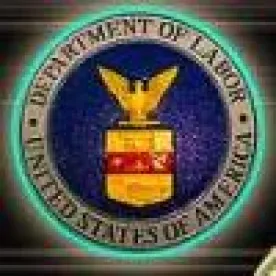Much of the anxiety that a Department of Labor (“DOL”) Wage and Hour Division (“WHD”) investigation causes is due to the mystery of the investigative process. In this case, what you don’t know can hurt you. If an employer is unaware of the process or its demands, too much or too little information may be handed over – resulting in negative consequences. Let’s take a look at how the investigation will be conducted once the DOL investigator steps inside the workplace.
DOL investigations generally start in one of two ways: an employee or a competitor makes a complaint regarding wage and hour practices. The DOL rarely investigates an employer on its own initiative, though it has the power to do so.
An investigator may send a letter requesting a time to visit, but the DOL has the right to show up on-site unannounced. An employer should make efforts to accommodate an investigator, but should not have to interrupt their normal business operations to do so. It is permissible to ask for up to 72 hours to comply with any investigative demand.
The Fair Labor Standards Act (“FLSA”) specifically authorizes investigators to investigate and collect information, inspect the workplace and records (such as payroll or tax records), and interview employees to determine whether violations have occurred. An investigation generally consists of the following steps:
(1) The initial conference
The investigator will clarify the scope of the DOL investigation. Note that an investigator does not have to disclose what prompted the investigation, and that complaints are confidential. During this stage, management may be asked questions about their daily operations, revenue, payment methods, and other employment issues. It is during this time that employers should discuss with the investigator how interviews or document production will be handled in the investigation. It is crucial to understand that employers can, and should, be represented by counsel or accountants throughout the investigative process.
(2) Document production
Keep a record of all documents produced. If the investigator asks for information that includes trade secrets or proprietary information, be sure to properly label the documents as such.
(3) On-site inspection
The investigator may want to take a look around the facility or office. The investigator may speak with employees and take notes. The employer may accompany the investigator while he or she is on-site.
(4) Employee interviews
The DOL may conduct interviews of individual employees. Employees should never be coaxed or coerced about what to say in an interview, but they can be prepared. Legal counsel can educate employees on what to expect, inform them that interviews are voluntary, and that they have certain rights in the course of the interview (such as demanding a copy of any written statements or examining documents that are in discussion).
(5) Closing conference
If the investigator finds that violations have occurred,, a closing conference will be conducted. Such a conference may be held weeks after the on-site inspection. At the closing conference, the DOL findings are communicated, the actions necessary for compliance are established, and post-audit rights are explained. Employers may ask for additional time to provide information to correct any factual errors that the investigator found.
Never underestimate the seriousness of a DOL investigation. Now more than ever, employers should carefully plan for the worst-case scenario: an unannounced knock on the door. In the same vein, employers should understand that an investigation is not a one-sided practice – employers have rights and responsibilities as well



 />i
/>i

